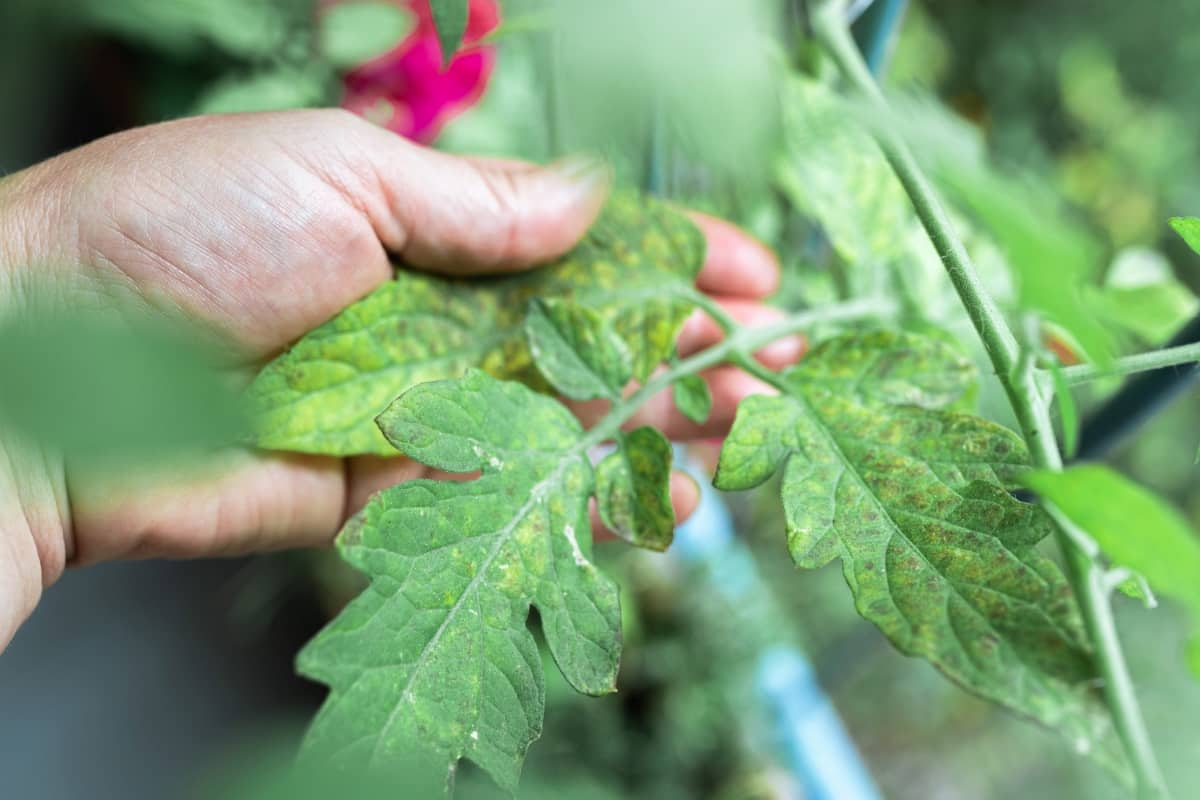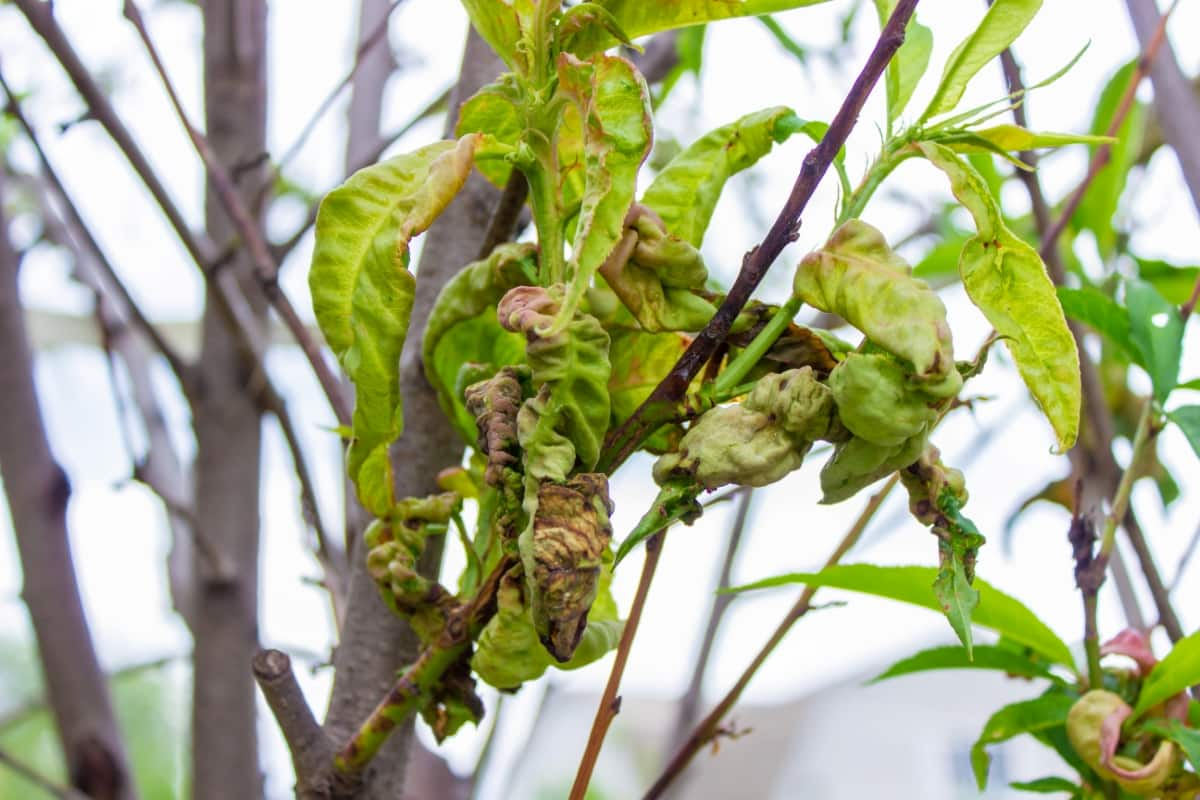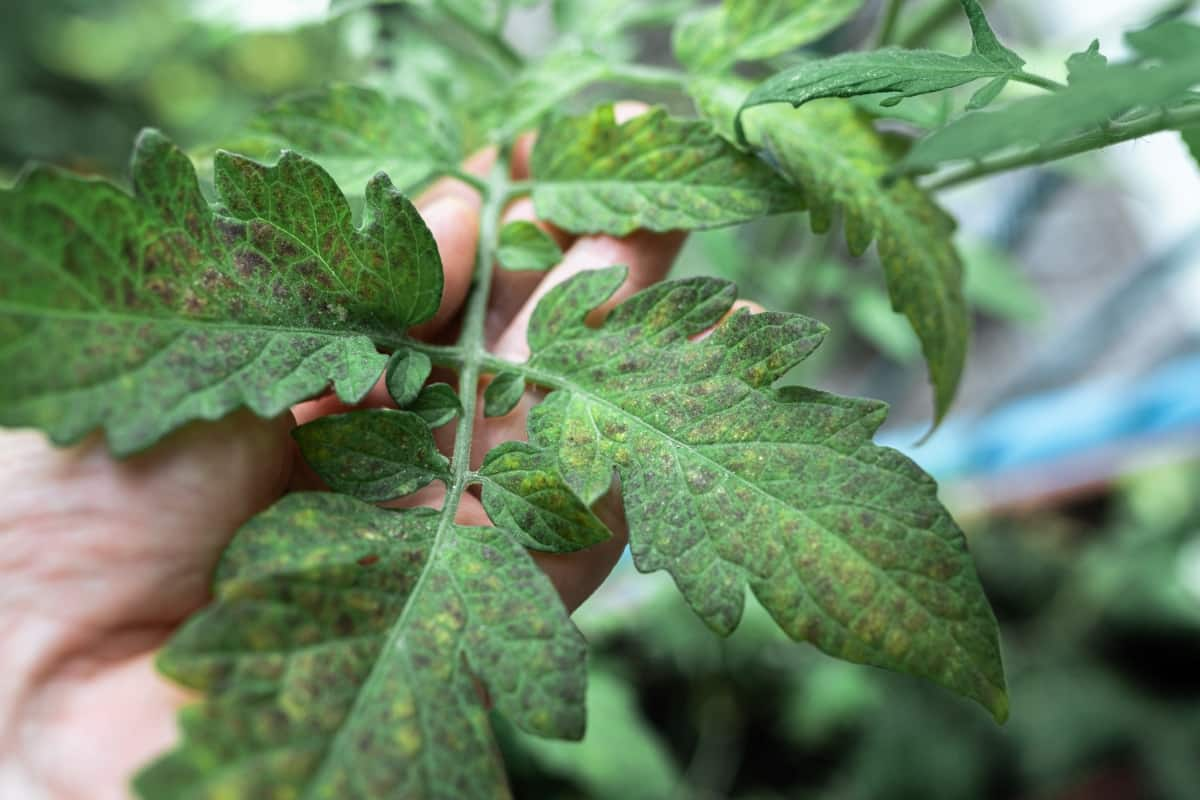Explore effective strategies to combat Early Blight, a common plant disease. We’ll delve into its causes, identification, symptoms, and treatment methods, providing clear, scientifically accurate guidance for gardeners and farmers to safeguard their crops against this pervasive threat.

How to Prevent Early Blight
Understanding Early Blight Types and Causes
A widespread fungal disease that affects tomato plants and other nightshade plants is called early blight. Alternaria solani, a fungus that may grow on seeds, plant waste, and soil, is the cause of it. Early signs of blight often start as little brown spots with concentric rings on the plant’s lower leaves.
The leaves become yellow and fall as the spots get larger and blend. Additionally, the fungus may infect fruits and stems, resulting in rotting and sunken sores. Tomato plants that experience early blight are more vulnerable to other diseases and pests, and their production and quality may suffer as a result.
How to Identify Early Blight: Signs and Symptoms to Look Out For
- Leaf Symptoms: Look for small, brown spots on older leaves, often surrounded by yellow. These spots expand, forming rings like a target.
- Stem and Fruit Symptoms: Dark, sunken lesions may appear on stems and fruits, affecting their development.
- Spread Pattern: The disease typically starts on lower leaves, moving upwards. Humid, warm conditions accelerate its spread.
Early detection is crucial for effective management. Regularly inspect plants, focusing on lower leaves and areas with prior disease history. Prompt identification and treatment can prevent significant crop damage.
How to Prevent Early Blight in Vegetables
Alternaria solani is a common fungus that causes early blight on food crops, including potatoes and tomatoes. Start with disease-resistant cultivars and make sure there is enough room for air circulation to avoid it. Crop rotation should be done on a regular basis; plant sensitive plants in a different spot for at least three years.
Remove diseased leaves and other trash to keep the landscape clean. To stop debris and fungus spores from splattering onto plants, cover them with mulch. Wet leaves promote the development of fungi; therefore, water plants around the base to keep the foliage dry. Fungicides may be used as a prophylactic precaution but always read the label carefully. Effective management of early blight requires regular observation and prompt action.
Early Blight Prevention in Fruits
- Crop Rotation: Rotate crops annually to reduce fungal spores in the soil.
- Resistant Varieties: Choose fruit varieties with resistance to Early Blight.
- Proper Spacing: Space plants adequately to ensure good air circulation.
- Timely Watering: Water plants in the morning to allow foliage to dry during the day.
- Mulching: Use mulch to prevent spore splash from the soil.
- Pruning: Remove lower leaves to reduce spore contact.
- Fungicides: Apply fungicides, both organic and synthetic, as a preventive measure.
Managing Soil pH to Prevent Early Blight in Plants
Effectively controlling the pH of the soil is essential to avoiding the frequent fungal disease known as Early Blight in plants. The ideal pH range for soil is 6.0 to 6.5, which makes the environment less favorable for the pathogen. The first step is to test the pH of the soil and make any necessary reclamation.
Adding lime to acidic soils (pH less than 6.0) increases the pH. On the other hand, in alkaline soils (pH more than 7.0), sulfur or aluminum sulfate may reduce pH. Early Blight risk is greatly decreased by routinely monitoring and maintaining the optimal pH of the soil in addition to other cultural techniques like crop rotation and adequate watering. This method provides a long-term and potent defense against early blight by combining soil health with plant disease control.
Irrigation Management for Early Blight Prevention
Controlling irrigation is essential to avoiding early blight, a fungal disease that damages crops, especially potatoes and tomatoes. Because the disease prefers moist environments, carefully managed irrigation is crucial. Drip irrigation reduces leaf moisture and lowers the danger of blight compared to overhead watering.
In case you missed it: Early Blight Management in Tomato: Symptoms, Treatment, Chemical, Biological, Natural, and Organic Control

It also helps to schedule properly, prevent overwatering, and keep the soil at a normal moisture level. Maintaining proper soil drainage is essential to avoiding waterlogging, which makes blight worse. It might also be beneficial to keep an eye on the weather and modify watering as necessary. The effects of early blight may be lessened by carefully controlling the amount of water used, which will encourage healthier, more fruitful crops.
Control Weeds and Debris to Prevent Early Blight
Thorough weed and debris control is essential to protecting plants against early blight, a serious fungal disease. The fungus *Alternaria solani* is the main cause of early blight, and it grows best in areas overgrown with weeds and plant waste. These undesirable substances provide a moist microenvironment that is perfect for the growth of fungi and harbor spores.
Keeping garden areas clean and well-ventilated, as well as routinely pulling weeds and plant leftovers, are effective measures. Additionally, by preventing direct contact between soil and plant foliage, mulching may effectively decrease the transmission of spores. By putting these precautions in place and keeping a regular eye out for the disease’s early symptoms, you may significantly reduce the likelihood of early blight and encourage stronger, healthier plants.
Use Fungicides Effectively to Prevent Early Blight
To control early blight in plants, choose a labeled fungicide like chlorothalonil, mancozeb, or copper-based products. Follow the label’s instructions for application rate, frequency, and safety precautions. Spray the entire plant, including the undersides, until the foliage is wet but not dripping. Repeat the application of fungicide every 7 to 14 days, depending on the weather and disease pressure.
Use fungicides with different modes of action to prevent resistance development. Use products with the same group number more than twice in a row. Practice good cultural practices to reduce the risk of early blight infection, such as planting resistant varieties, spacing plants properly, pruning and staking, removing infected leaves and debris, watering at the base, and avoiding working in the garden when the plants are wet.
Integrated Pest Management (IPM) for Sustainable Early Blight Prevention
- Monitoring: Regular observation of crops for early signs of blight.
- Cultural Practices: Includes crop rotation and proper irrigation to prevent favorable conditions for blight.
- Resistant Varieties: Using plant breeds less susceptible to early blight.
- Biological Control: Utilizing natural blight predators or antagonists.
- Chemical Control: Judicious use of fungicides only when necessary.
Preventive Measures for Early Blight in Greenhouse Environments
- Hygiene: Keep greenhouses clean. Remove plant debris and disinfect tools to minimize spore spread.
- Air Circulation: Ensure good ventilation. This reduces leaf wetness, a key factor for fungal growth.
- Water Management: Water plants at the base, not overhead, to keep foliage dry.
- Resistant Varieties: Use plant varieties with known resistance to early blight.
- Regular Inspection: Monitor plants frequently. Early detection leads to more effective management.
- Fungicides: Apply fungicides as a preventive measure, particularly during high-risk periods.
Frequently Asked Questions About Early Blight
How Does Early Blight Spread?
The disease spreads through fungal spores, which wind, water, insects, and gardening tools can carry. Warm, humid conditions typically favor its development and spread.
Can Overwatering Lead to Early Blight?
Overwatering doesn’t directly cause Early Blight, but it can create a humid environment that’s conducive to the spread of the fungus.
In case you missed it: Leaf Blight Disease Management in Sorghum: Symptoms, Treatment, Chemical, Biological, Natural, and Organic Control

Conclusion
To prevent early blight, identify it by dark spots on leaves, stem lesions, and fruit rot. Control involves crop rotation, resistant varieties, proper spacing, and fungicides. Regular monitoring and prompt treatment are key to managing this common tomato disease.
- Beneficial Insects in Pest Management
- Natural Solutions for Pest Control in Flower Gardens
- Types of Fungicides Used in Agriculture
- Common Issues in the Fruit Development Stage of Pomegranate Farming
- Fruit Development Issues in Papaya: Easy Solutions and Treatment
- Soil-Borne Diseases and How to Protect Your Plants
- Practices to Prevent Disease Spread in the Garden
- From Wilted to Thriving: How to Treat Root Rot Naturally in Houseplants
- Natural Remedies to Cure Brown Spots on Fig Tree Leaves